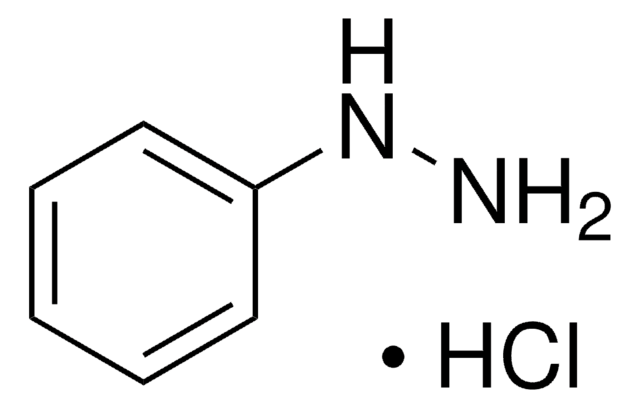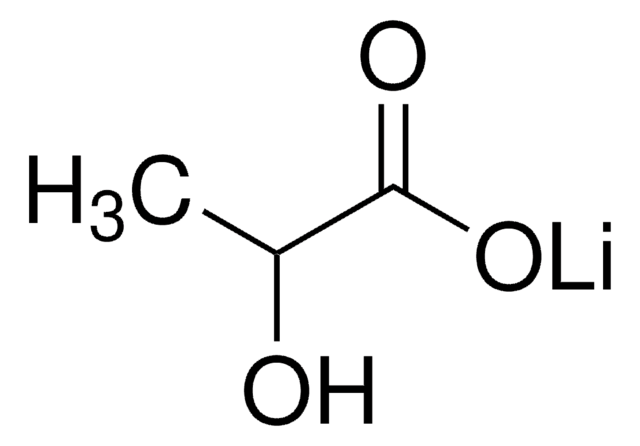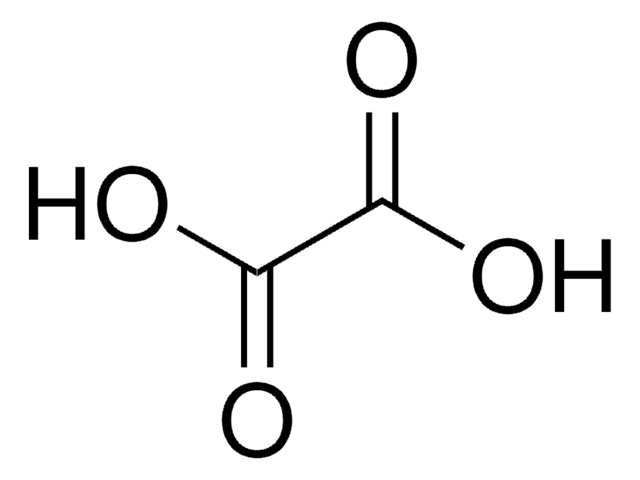M4128
Mercury(II) thiocyanate
96.5-103.5% (titration)
Synonyme(s) :
Mercuric isothiocyanate, Mercuric sulfocyanide, Mercuric thiocyanate, Mercury di(thiocyanate), Thiocyanic acid, mercury(II) salt
About This Item
Produits recommandés
Essai
96.5-103.5% (titration)
Pertinence de la réaction
core: mercury
reagent type: catalyst
Pf
165 °C (dec.) (lit.)
Densité
3.71 g/mL at 25 °C (lit.)
Chaîne SMILES
N#CS[Hg]SC#N
InChI
1S/2CHNS.Hg/c2*2-1-3;/h2*3H;/q;;+2/p-2
Clé InChI
GBZANUMDJPCQHY-UHFFFAOYSA-L
Vous recherchez des produits similaires ? Visite Guide de comparaison des produits
Description générale
Application
- Polymeric mercury(II) coordination complexes with various derivatives of 4,4′-bipyridine ligands via the branched tube method.
- Manganese mercury thiocyanate (MMTC), an organometallic optical single-crystal.
- Heterotrinuclear copper(II)–mercury(II)–copper(II)complexes possessing antibacterial and antifungal activities.
Qualité
Clause de non-responsabilité

Mention d'avertissement
Danger
Mentions de danger
Conseils de prudence
Classification des risques
Acute Tox. 1 Dermal - Acute Tox. 2 Inhalation - Acute Tox. 2 Oral - Aquatic Acute 1 - Aquatic Chronic 1 - STOT RE 2
Risques supp
Code de la classe de stockage
6.1A - Combustible acute toxic Cat. 1 and 2 / very toxic hazardous materials
Classe de danger pour l'eau (WGK)
WGK 3
Point d'éclair (°F)
248.0 °F - closed cup
Point d'éclair (°C)
120 °C - closed cup
Listes réglementaires
Les listes réglementaires sont principalement fournies pour les produits chimiques. Seules des informations limitées peuvent être fournies ici pour les produits non chimiques. L'absence d'indication signifie qu'aucun des composants n'est répertorié. Il incombe à l'utilisateur de s'assurer de l'utilisation sûre et légale du produit.
EU REACH Annex XVII (Restriction List)
Faites votre choix parmi les versions les plus récentes :
Déjà en possession de ce produit ?
Retrouvez la documentation relative aux produits que vous avez récemment achetés dans la Bibliothèque de documents.
Les clients ont également consulté
Notre équipe de scientifiques dispose d'une expérience dans tous les secteurs de la recherche, notamment en sciences de la vie, science des matériaux, synthèse chimique, chromatographie, analyse et dans de nombreux autres domaines..
Contacter notre Service technique











